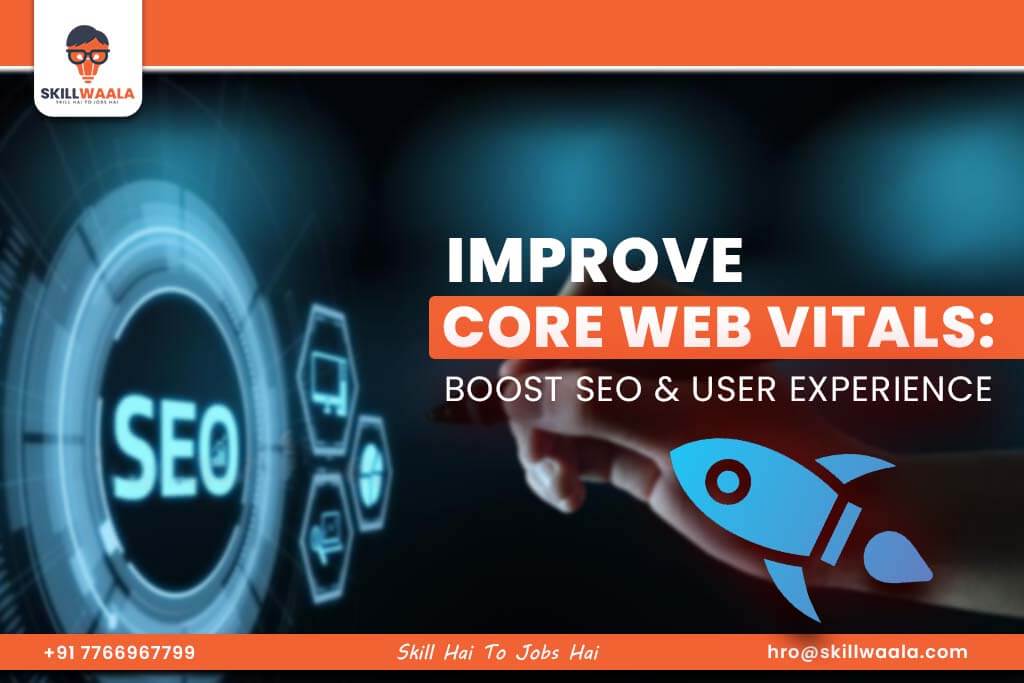Core Web Vitals are crucial metrics that measure the user experience of a website. While we focus on content, backlinks, and keyword optimization, Google focuses on the on-page experience. It considers these metrics crucial for SEO rankings.
If your website loads slowly, responds late to user interactions or has visual instability, visitors may leave, leading to a higher bounce rate. This gives Google the signal that your website does not offer a satisfactory user experience, negatively impacting the rankings.
In this guide, we will dive into how to optimize Core Web Vitals and how it could impact your rankings.
What are Core Web Vitals?
Google Core Web Vitals are essential metrics that determine the user experience of the visitors who navigate to your website. It measures the speed, interactivity, and visual stability of a web page.
Improving Core Web Vitals is a great way to boost your SEO practices as Google considers them an important ranking factor.
There are three types of Core Web Vitals:
Largest Contentful Paint (LCP): LCP measures the time it takes for the largest visible content (image, text block, video, etc.) to fully load on the website. Your LCP should be less than 2.5 seconds and should not exceed 4 seconds.
Interaction to Next Paint (INP): This metric measures the site’s responsiveness to user interactions. Your website’s INP should be less than 200 milliseconds for a smooth and responsive experience. Anything above 500 milliseconds is considered poor and can negatively impact the user experience.
Cumulative Layout Shift(CLS): Cumulative Layout Shift or CLS refers to how much your page’s layout shifts as it loads. The CLS of your website should be less than 0.1 to ensure a satisfactory experience.
Now, that we have a general idea about the three essential metrics, let’s understand them in detail.
Also Read: What is Technical SEO & How to Optimize for Google Rankings?
What is the Largest Contentful Paint (LCP)?
Have you ever visited a website but the page just does not seem to load? If you have to wait for a page to load for more than 5 seconds, you are better off not visiting it. Google pays special attention to factors like this as it determines the user experience of the web page.
The minimum time for LCP is 2.5 seconds and the maximum time is 4 seconds. Anything above 4 seconds is considered a poor LCP and may affect rankings.
Example: Fast LCP vs Slow LCP
- Slow LCP (4+ sec): The user opens a news website but the headline and main image load late. This may lead to the user leaving the website.
- Fast LCP (<2.5 sec): The user opens a website and the page loads instantly. This seamless experience enhances the user experience.
How to Improve LCP?
- Use Fast Hosting: Ensure reliable server load times
- Optimize Images: Use WebP format for images and enable lazy loading
- Remove Unnecessary JavaScript: Heavy scripts can delay LCP
- Use a CDN: Services like Cloudflare or AWS speed up content delivery
- Optimize CSS & Fonts: Minimize unused CSS and ensure fonts load efficiently.
What is the First Input Delay (FID)?
FID measures the time taken for a website to respond to a user’s first interaction. For example, clicking a button or link. A low FID is crucial for pages with interactive elements. However, this metric was discontinued on 26th March 2024. It was replaced by Interaction to Next Paint (INP).
Understanding and Optimizing Interaction to Next Paint (INP)
In the past, the First Input Delay or FID metric was used to measure the duration from the first interaction a user makes to the moment the page responds. However, that was replaced with Interaction to Next Paint (INP).
INP measures how quickly a website responds to all user interactions like clicks, taps, and keyboard inputs. Google prefers an INP of less than 200 milliseconds.
However, it is also worth noting that INP is measured by whichever element on the webpage takes the longest to respond. This means that even if your web page has most interactions that meet the standard, even one slow interaction can bring down the total INP.
Slow vs Fast INP
Slow INP: You click on the Add to Cart button but nothing happens for a few seconds. The user gets frustrated and leaves the website. A high INP score of 300+ milliseconds is considered poor.
Fast INP: You click on the Add to Cart button and a rotating loading icon appears instantly. The cart is updated within seconds, providing instant feedback.
How to Improve INP?
Optimize JavaScript execution: Remove unused scripts, instead use async/defer.
- Reduce Third-party Scripts: Minimize ads, trackers, and chat widgets
- Optimize Event Headers: Use lightweight functions for clicks and scrolls
- Optimize Images & Videos: Use WebP format and enable lazy loading
- Keep the Main Thread Free: Avoid long tasks that overwork the main thread.
- Use Fast Hosting & CDN: Services like Cloudflare of AWS enhance speed.
Also Read: Content Optimization Guide to Rank #1 on Google
What is Cumulative Layout Shift and How to Optimize It?
Cumulative Layout Shift refers to the frequency of how much your page’s layout changes as it loads. You must have scrolled through a website as it was loading and just as you were about to click on something, the page shifted. This is an example of a poor CLS.
Google considers this as a crucial ranking factor as it wants to prioritize websites that offer the best possible user experience.
Good vs Bad CLS
- Bad CLS: You want to click on a link but the page shifts causing you to click on an ad, navigating you to another page.
- Good CLS: A web page loads with all content stable without any page shift, allowing easy reading and navigation.
How to Improve CLS?
Set Fixed Dimensions for Images & Videos: Prevents content from shifting.
Reserve Space for Ads and Banners: Avoid placing ads anywhere
Preload Fonts and Icons: This prevents sudden text shifts.
Use Smooth Animations: Avoid any abrupt movements.
Also Read: Meta Tags in SEO: The Ultimate Guide
LCP vs. FCP: What’s the Difference?
| Feature | FCP (First Contentful Paint) | LCP (Largest Contentful Paint) |
| What It Measures | When the first visible content (text, image, logo) appears on the screen. | When the largest visible content (image, heading, video, etc.) loads. |
| When It Triggers | As soon as the first content appears. | When the biggest visible content loads. |
| Importance | Signals that the page has started loading. | Indicates that the page is nearly fully loaded. |
| Good Score | ≤ 1.8 sec | ≤ 2.5 sec |
Why Are Core Web Vitals Important?
CoreWeb Vitals are a crucial metric as they directly impact the user experience of your website and ultimately search rankings. Google considers these metrics as essential ranking factors so they are key in search engine optimization.
Moreover, a better user experience also ensures high user retention, ensuring that users interact with your page and return to it. However, besides these three, there are some other factors that Google considers when evaluating a page’s user experience. These are:
- Mobile Optimization
- Misleading content
- Safe browsing (not having malware on your web page)
- Whether you are using HTTPS or not
- Lack of interstitial popups
Also Read: How to Learn Digital Marketing for Free with Certification?
How to Check Your Website’s Core Web Vitals?
Now, there are several ways to check your website’s Core Web Vitals. To access your Core Web Vitals data, you will need to set up the Google Search Console.
To access GSC, you will have to verify whether you are the owner of the website. However, if you have already verified your Google Analytics account, it can automatically verify GSC.
Once you are in, go to the “Experience” section of your account to get insights into Core Web Vitals.
You can also use the Page Speed Insights tool to check your Core Web Vitals. It is quite simple. Just search for “Page Speed Insights” and enter your website’s domain.
Final Words
Improving Core Web Vitals is essential for SEO and ensuring user experience. A fast-loading, responsive, and stable website keeps visitors engaged, reducing bounce rates and improving rankings. Follow these optimization tips to enhance your website’s performance and stay ahead in search results. Remember, if you want to boost your rankings and appear in search results, it is crucial to optimize your Core Web Vitals to give users a seamless user experience.


